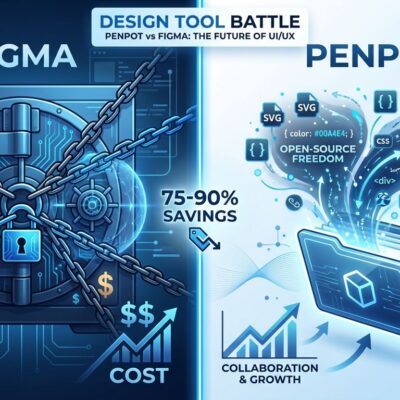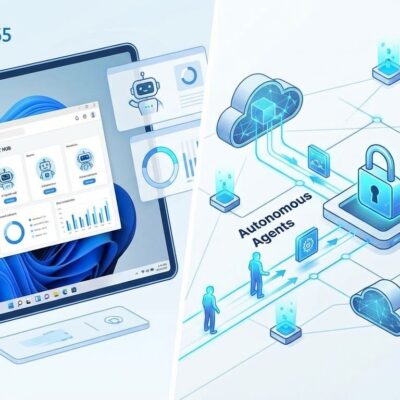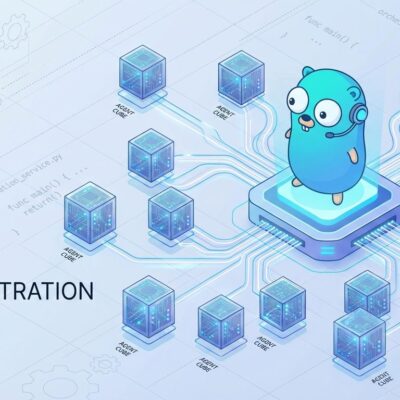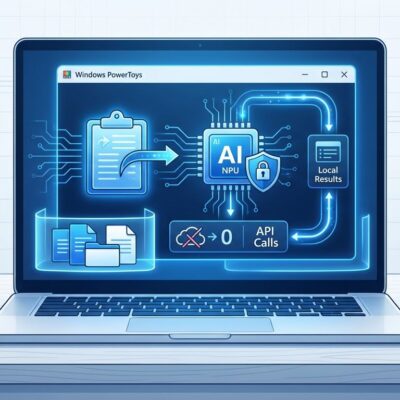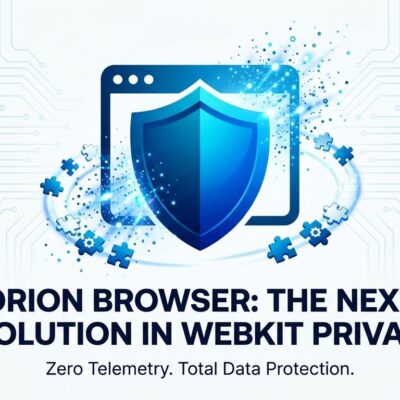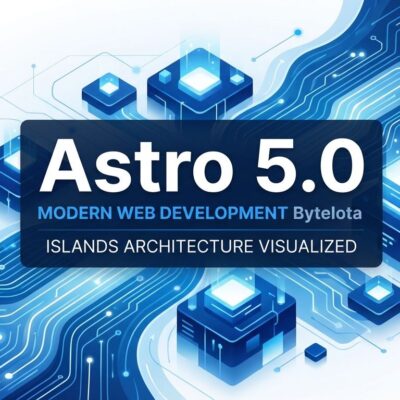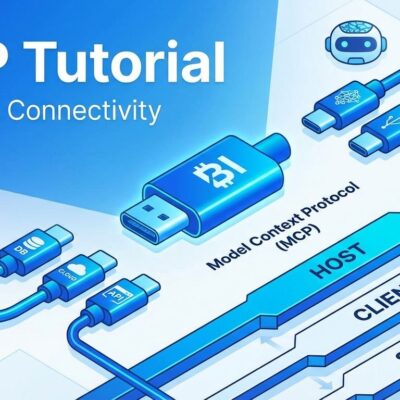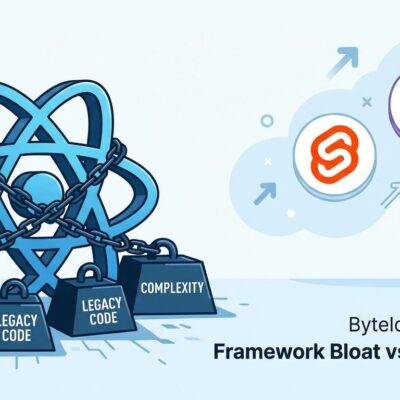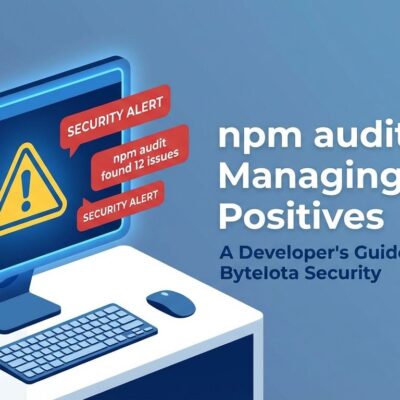
LLM API costs are eating budgets. Every API call charges per token—input and output. JSON is the default for structured data, but it’s a token hog: repetitive field names, extra braces, unnecessary punctuation. However, a 3,000-token prompt costs real money multiplied by thousands of daily requests. TOON (Token-Oriented Object Notation) changes this equation with 30-60% fewer tokens while maintaining JSON’s data model. Moreover, this isn’t hype. TOON gained 2,000+ GitHub stars in three days because developers are cost-conscious and token efficiency delivers measurable ROI.
How TOON Achieves 30-60% Token Reduction
TOON combines YAML’s indentation-based structure with CSV’s tabular compactness while preserving JSON’s data model. Furthermore, the format reduces tokens through four core optimizations:
1. Indentation replaces braces. Like YAML, TOON uses visual hierarchy instead of curly braces and brackets. No wasted tokens on punctuation that humans ignore anyway.
2. Declare field names once. For arrays of objects, TOON uses a table header: {id,name,role} declares columns once, then rows contain only values. In contrast, JSON repeats field names for every object in the array.
3. Minimal punctuation. Remove redundant brackets and excessive quoting. Specifically, values only need quotes when they contain commas or colons.
4. Explicit array lengths. The [N] notation tells LLMs exactly how many items to expect, thereby improving parsing accuracy.
Here’s the difference:
# JSON (verbose)
{"users":[{"id":1,"name":"Alice"},{"id":2,"name":"Bob"}]}
# TOON (compact)
users[2]{id,name}:
1,Alice
2,BobThe TOON format version uses 39.6% fewer tokens. Consequently, multiply that savings across thousands of API calls and the ROI becomes undeniable.
Benchmarks: Fewer Tokens AND Higher Accuracy
The official TOON specification and benchmarks tested 209 data retrieval questions across 4 models (Claude, Gemini, GPT, Grok). The results validate both efficiency and accuracy:
| Format | Accuracy | Tokens | Efficiency (per 1K) |
|---|---|---|---|
| TOON | 73.9% | 2,744 | 26.9 |
| JSON compact | 70.7% | 3,081 | 22.9 |
| JSON | 69.7% | 4,545 | 15.3 |
| YAML | 69.0% | 3,719 | 18.6 |
TOON achieves higher accuracy (73.9% vs 69.7%) with fewer tokens (2,744 vs 4,545). That’s a dual win: better comprehension and lower costs. Notably, the reduced clutter improves LLM attention mechanisms—less noise means better focus on actual data.
Real-world results confirm the benchmarks. Scalevise reported 50%+ token reduction and 15% latency improvement. Another practical test showed 56% fewer prompt tokens and a 5-second speed boost. Therefore, for heavy LLM users, that translates to an estimated $90,000 in annual API savings.
When to Use TOON Format vs JSON vs CSV
No format is universal. TOON excels with specific data shapes and fails with others. Here’s the decision framework:
Use TOON when:
- Data is uniform arrays of objects (user lists, product catalogs, log entries)
- Same fields across all items (consistent schema)
- Large datasets (1000+ items) where savings accumulate
- Token costs matter (high-volume LLM applications)
Use JSON when:
- Deeply nested structures (TOON’s indentation overhead negates savings)
- Non-uniform or irregular data (TOON requires consistency)
- Small datasets (<100 items) where conversion overhead exceeds savings
- APIs, storage, or data interchange (TOON is LLM-input only)
Use CSV when:
- Pure flat tables with no nesting
- Maximum token efficiency matters more than structure
- No validation needed (LLM can infer schema)
| Data Type | Best Choice | Why |
|---|---|---|
| Uniform array of objects | TOON | 30-60% savings, tabular format wins |
| Deeply nested objects | JSON | Indentation overhead negates benefit |
| Pure flat table | CSV | Maximum efficiency, no structure |
| Small datasets (<100) | JSON | Overhead > savings |
| Large tabular (1000+) | TOON | Massive savings at scale |
Test with the online JSON to TOON converter before implementing. Indeed, your actual savings depend on data shape. Benchmark with your specific use case instead of assuming universal benefit.
Implementation: TypeScript and Python Examples
Getting started with TOON format takes five minutes. Both TypeScript and Python have production-ready libraries:
TypeScript:
import { encode, decode } from "@toon-format/toon";
const data = {
users: [
{ id: 1, name: "Alice", role: "admin" },
{ id: 2, name: "Bob", role: "user" }
]
};
const toon = encode(data);
// users[2]{id,name,role}:
// 1,Alice,admin
// 2,Bob,user
const json = decode(toon); // Lossless round-tripPython:
from toon_python import encode, decode
data = {
"users": [
{"id": 1, "name": "Alice", "role": "admin"},
{"id": 2, "name": "Bob", "role": "user"}
]
}
toon = encode(data)
# users[2]{id,name,role}:
# 1,Alice,admin
# 2,Bob,user
json_data = decode(toon) # Lossless conversion backBest practice: Include a TOON format example in your system prompt. LLMs haven’t been extensively trained on TOON format. Thus, providing a format example helps models adapt:
system_prompt = """
Data will be provided in TOON format. Example:
users[2]{id,name}:
1,Alice
2,Bob
Analyze the data below.
"""This mitigates the model familiarity gap. With one clear example, LLMs parse TOON accurately even without extensive training on the format.
Limitations: Not a Silver Bullet
TOON solves a specific problem well. It’s not a JSON replacement for all use cases. Understanding the trade-offs prevents wasted effort:
Model familiarity gap. LLMs were trained on JSON, not TOON. Some studies report accuracy trade-offs (47.5% vs 52.3% for specific table tasks). However, the mitigation: include TOON examples in prompts. Models adapt quickly.
LLM input only. TOON is designed exclusively for feeding data to LLMs. Don’t use it for APIs, databases, or general data storage. Instead, JSON remains the universal interchange format. Convert to TOON at runtime when preparing LLM prompts, not earlier.
Quoting overhead. Values containing commas or colons require quotes, adding tokens back. Long string fields can negate compression benefits. Specifically, TOON format works best with numeric data and short strings. If your dataset is mostly long text fields, test before assuming savings.
Ecosystem maturity. TypeScript and Python libraries are production-ready. Other languages vary in implementation quality. Currently, IDE support is limited—no linters or validators yet. You’re relying on official specification and community-maintained libraries.
The Hacker News discussion about how TOON could change how AI sees data captures the pragmatic developer sentiment: “Sounds like a joke someone made at a hackathon, but it’s real.” TOON is a specialized optimization tool, not a revolutionary paradigm shift. Nevertheless, it solves token bloat for tabular LLM prompts. That’s valuable, but know the scope.
Key Takeaways
- TOON format achieves 30-60% token reduction for uniform, tabular data by combining YAML structure with CSV compactness while preserving JSON’s data model
- Official benchmarks show TOON reaches 73.9% accuracy (vs JSON’s 69.7%) with 39.6% fewer tokens—better comprehension and lower costs
- Use TOON for LLM input with uniform arrays of objects; stick with JSON for nested structures, small datasets, and APIs/storage
- TypeScript and Python implementations are production-ready with simple encode/decode APIs—test your data with online converters before implementing
- Include TOON format examples in LLM prompts to mitigate model familiarity gaps; LLMs adapt quickly with clear examples
- TOON is a specialized tool for LLM cost optimization, not a universal JSON replacement—know your data shape and benchmark actual savings
Test TOON with your data using the online converter. If you’re sending structured, repetitive data to LLMs thousands of times daily, the token savings justify the integration effort. Conversely, if your prompts are small or your data is deeply nested, stick with JSON. TOON is a scalpel, not a hammer.

